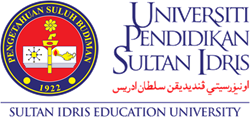We can make it: A probabilistic analysis on the satisfaction in flexible learning
DOI:
https://doi.org/10.37134/jrpptte.vol12.2.1.2022Keywords:
Binary logistic regression, COVID-19, flexible learning, quantitative design, student satisfactionAbstract
When Higher Education Institutions shifted to online learning due to COVID-19, student satisfaction significantly dropped. Study aimed to determine which of the variables significantly influenced the satisfaction in flexible learning. This research employed quantitative design and used, stratified random sampling to determine the 205 respondents who answered the two adapted research questionnaires. Frequency, Spearman’s Correlation, and Binary Logistic Regression were used to statistically treat the data. The study confirmed that majority of the students had access to strong internet connection, and they used mobile data to access internet connection. Study revealed that most of the students used both smartphone and laptop to attend flexible learning. It is presented in this study that both modular learning and online learning were the learning modalities used in conducting flexible learning. Most of the instructors used Google Meet in conducting synchronous learning and LMS in the conduct of asynchronous classes. The study concluded a very weak, positive monotonic relationship between access to strong internet connection and student satisfaction in flexible learning and a very weak, positive monotonic relationship between type of internet connection and student satisfaction in flexible learning. Study posited that among the variables, only the access to strong internet connection has a significant influence on student satisfaction in flexible learning which means that when students have strong internet connection there is a likelihood that they will be satisfied in flexible learning. Further investigation is suggested to explore the result of the study employing a qualitative research design to give meaning on the experiences of students during the conduct of online learning.
Downloads
References
Almusharraf, NM. & Khahro, S.H. (2020). Students’ satisfaction with online learning experiences during the COVID-19 Pandemic. International Journal of Emerging Technologies in Learning (iJET), 15 (21), 246-267. http://dx.doi.org/10.3991/ijet.v15i21.15647
Amsal, A.A. & Meuthia (2020). Students’ online learning satisfaction on learning management system. In Proceedings of the 3rd International Conference on Educational Development and Quality Assurance (ICED-QA 2020). Advances in Social Science, Education and Humanities Research 506, 528-534
Baticulon, R.E., Alberto, N.R.I., Baron, M.B.C., Mabulay, R.E.C., Rizada, L.G.T., Sy, J.J., Tiu, C.J.S., Clarion, C.A., & Reyes, J.C.b (2020). Barriers to online learning in the time of COVID-19: A national survey of medical students in the Philippines. http://dx.doi.org/10.1101/2020.07.16.20155747
Boholano, H. B., Merin, J. A., & Dapat, L. C. (2021). Building online facilitating skills in the new normal. Journal of Research, Policy & Practice of Teachers and Teacher Education,11(1), 13-24. http://dx.doi.org/10.37134/jrpptte.vol11.1.2.2021
Cole, M.T., Shelley, D.J., & Swartz, L.B. (2014). Online instruction, e-learning, and student satisfaction: A threeyear study. The International Review of Research in Open and Distance Learning, 15 (6) 111-113.
Creswell, J.W. (2014). Research design: Qualitative, quantitative, and mixed methods approaches 4th Edition. SAGE Publication Ltd. USA
Dziuban, C., Graham, C.R., Moskal, P.D., Norberg, A., & Sicilia, N. (2018). Blended learning: the new normal and emerging technologies. International Journal of Educational Technology in Higher Education, 15 (3). http://dx.doi.org/10.1186/s41239-017-0087-5
Gavrilisr, V., Mavroidisr, I., & Giossos, Y. (2020). Transactional distance and student satisfaction in postgraduate distance learning program. Turkish Online Journal of Distance Education, 21 (3): 48-62. http://dx.doi.org/10.17718/tojde.762023
Gilbert, B. (2015). Online learning revealing the benefits and challenges. Education Masters Paper, 303. Retrieved from: https://core.ac.uk/download/pdf/48619313.pdf
Joaquin, J.J.B., Biana, H.T., & Dacela, M.A (2020). The Philippine higher education sector in the time of COVID-19. Frontiers in Education, 5:576371. http://dx.doi.org/10.3389/feduc.2020.576371
Means, B. & Neisler, J. with Langer Research Associates (2020). Suddenly online: A national survey of undergraduates during the COVID-19 pandemic. San Mateo, CA: Digital Promise
Moore, M.G. (1993). Theory of transactional distance. In D. Keegan (ed.), Theoretical `principles of distance education (pp. 22-38). New York: Routledge
Nguyen, V.A. (2016). Examining students’ satisfaction with online learning activities in blended learning course: A case study. Proceedings of ICERI2016 Conference. http://dx.doi.org/10.21125/iceri.2016.1716
Sarvestani, M.S., Mohammadi, M., Afshin, J., & Raeisy, L. (2019). Students’ experiences of e-learning challenges; a phenomenological study. Interdisciplinary Journal of Virtual Learning in Medical Sciences, 10 (3), 1-10.
School Education Gateway. Survey on online and distance learning. 20 August 2020 Retrieved from https://www.schooleducationgateway.eu/en/pub/viewpoints/surveys/survey-on-online-teaching.htm
Shaid, N. A. N., Kamruzaman, F. M., & Sulaiman, N. A. (2021). Online learning during ongoing Covid-19 Pandemic: A survey of students’ satisfaction. International Journal of Academic Research in Business and Social Sciences, 11(7), 924-937. http://dx.doi.org/10.6007/IJARBSS/v11-i7/10557
Somosot, I.S. (2018). Instructional practices of beginning TLE teachers and student satisfaction among secondary schools of Sto. Tomas, Davao del Norte. Asian Journal of Multidisciplinary Studies, 1 (3), 6-13.
Swan, J.K.G. (2017). The challenges of online learning: Supporting and engaging the isolated learner. Journal of Leaning Design, 10 (1, 20-30. doi: http://dx.doi.org/10.5204/jld.v9i3.293
Szapkiw, M. & Szapkiw, A. (2010). An overview of distance education. Retrieved from: http://amandaszapkiw.com/elearning/principles-of-design/module-1/moores_model_of_interaction.html
Downloads
Published
How to Cite
Issue
Section
License
Copyright (c) 2022 Ian Saguing Somosot

This work is licensed under a Creative Commons Attribution-NonCommercial-ShareAlike 4.0 International License.




